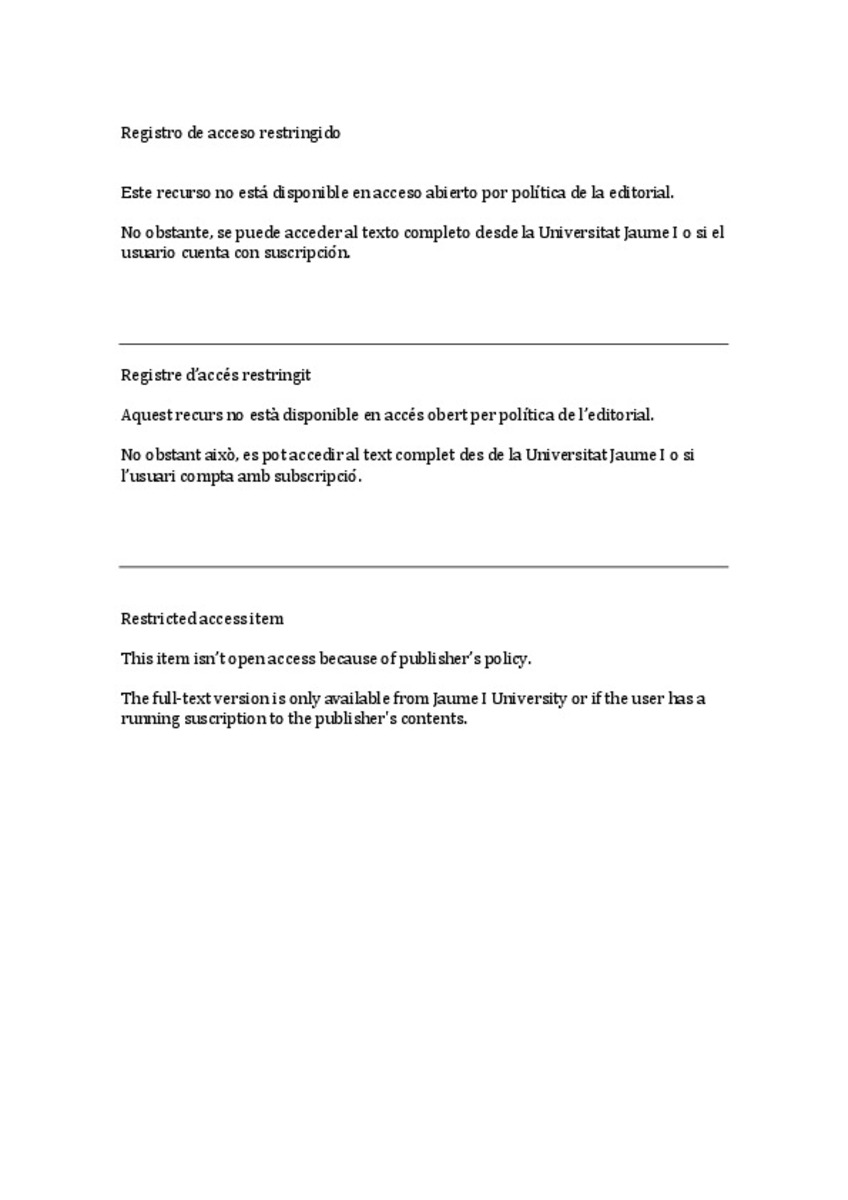Mostrar el registro sencillo del ítem
Eco-effiency alysis of the life cycle of interior partition walls: a comparison of alterantive solutions
| dc.contributor.author | Fernández García, Antonio | |
| dc.contributor.author | Ibáñez-Forés, valeria | |
| dc.contributor.author | Bovea, María D | |
| dc.date.accessioned | 2016-05-12T11:47:04Z | |
| dc.date.available | 2016-05-12T11:47:04Z | |
| dc.date.issued | 2015-08 | |
| dc.identifier.citation | FERRÁNDEZ-GARCÍA, Antonio; IBÁÑEZ-FORÉS, Valeria; BOVEA, María D. Eco-efficiency analysis of the life cycle of interior partition walls: a comparison of alternative solutions. Journal of Cleaner Production, 2016, 112: 649-665. | ca_CA |
| dc.identifier.uri | http://hdl.handle.net/10234/159589 | |
| dc.description.abstract | This paper presents an eco-efficiency analysis of the entire life cycle of 10 alternative solutions that can be used for interior partition walls that are variants on five building solutions commonly used in Spain (gypsum plasterboard system, hollow clay brick system, hollow concrete block system, autoclaved aerated concrete block system and gypsum block system). The full life cycle was considered for each of these interior partition wall solutions, which includes raw materials acquisition, transportation to the construction site, on-site installation and demolition and waste management at their end-of-life. For the environmental analysis, standard EN 15804, which provides product category rules for developing environmental declaration of construction elements based on the Life Cycle Assessment methodology, was applied. Main contributions for this application were the development of a comprehensive life cycle inventory adapted to the case study and the sensitivity analysis conducted for evaluating the influence of the characterisation factors in the environmental impact indicators. For the economic analysis, the costs of the life cycle of each solution were obtained. Finally, with the aim of selecting the alternatives with the best behaviour from both perspectives, an eco-efficiency study was conducted, the results of which showed that the gypsum plasterboard system and hollow concrete block system are the ones that combine the best environmental and economic performance. This is mainly due to the fact that they combine the lowest contribution to the impact for all the categories that were analysed, with lower life cycle costs. | ca_CA |
| dc.format.mimetype | application/pdf | ca_CA |
| dc.language.iso | eng | ca_CA |
| dc.publisher | Copyright © 2015 Elsevier | ca_CA |
| dc.relation.isPartOf | Journal of Cleaner Production,Volume 112, Part 1, 20 January 2016, Pages 649–665 | ca_CA |
| dc.rights | Copyright © 2016 Elsevier B.V. or its licensors or contributors. ScienceDirect® is a registered trademark of Elsevier B.V. | ca_CA |
| dc.rights.uri | http://rightsstatements.org/vocab/InC/1.0/ | * |
| dc.subject | Interior partition wall | ca_CA |
| dc.subject | Life cycle assessment | ca_CA |
| dc.subject | Life cycle cost | ca_CA |
| dc.subject | Environmental performance | ca_CA |
| dc.subject | Economic performance | ca_CA |
| dc.subject | Eco-efficiency analysis | ca_CA |
| dc.title | Eco-effiency alysis of the life cycle of interior partition walls: a comparison of alterantive solutions | ca_CA |
| dc.type | info:eu-repo/semantics/article | ca_CA |
| dc.identifier.doi | 10.1016/j.jclepro.2015.07.136 | |
| dc.rights.accessRights | info:eu-repo/semantics/restrictedAccess | ca_CA |
| dc.relation.publisherVersion | http://www.sciencedirect.com/science/article/pii/S0959652615010677 | ca_CA |
Ficheros en el ítem
Este ítem aparece en la(s) siguiente(s) colección(ones)
-
EMC_Articles [810]







